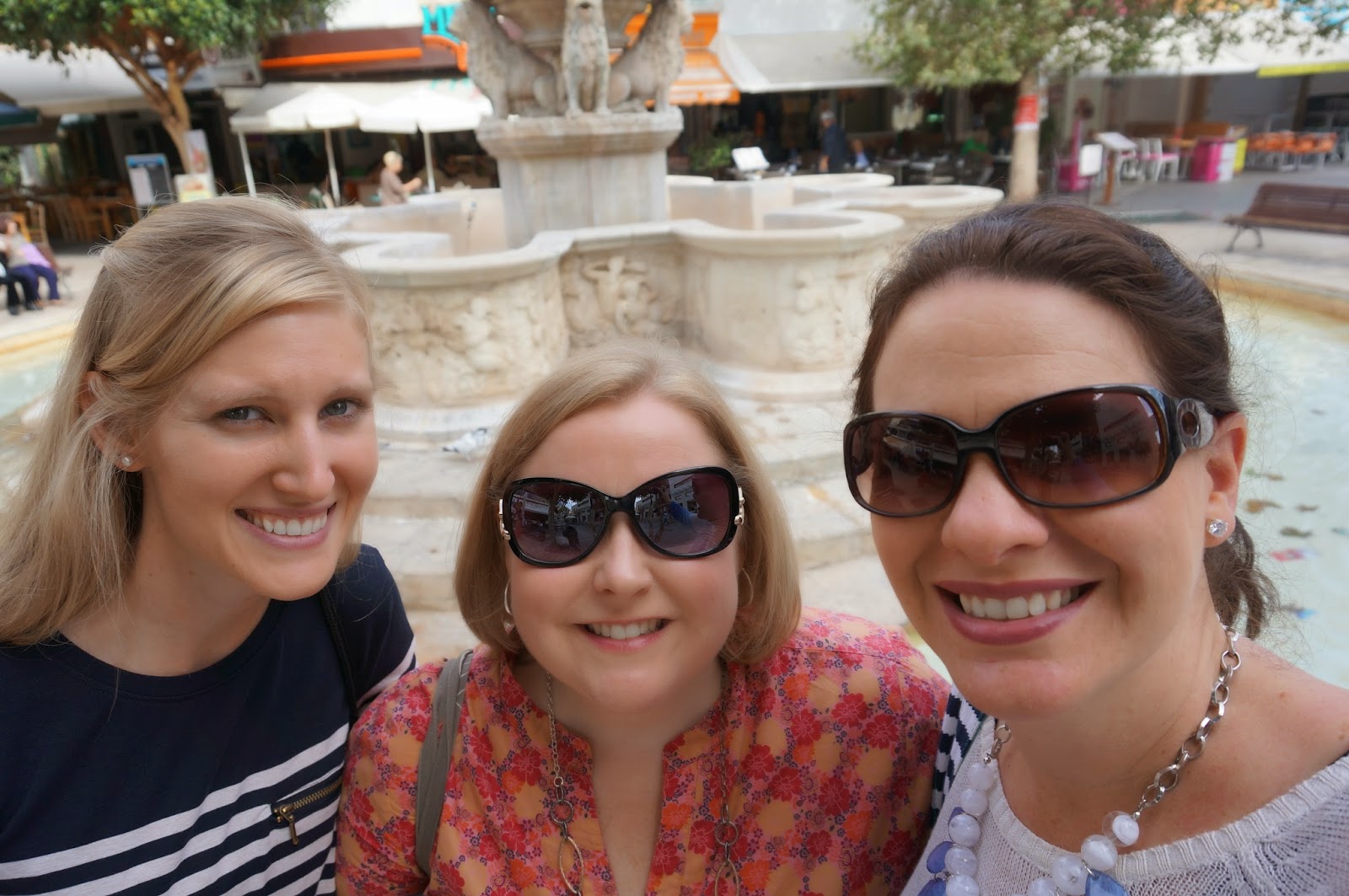Our cab driver then took us for a quick stop at the town center, where we saw this fountain. Constructed in 1628, it was made not for beauty, but to bring 1,000 barrels of water a day to this place from an aqueduct 15 miles away. It has 4 lion mouths, so that many people could fill their jugs at once. The ingenious thing is that the final point of the aqueduct were the lions' mouths, yet they had no pump to bring the water up to that point. This town square was the center of the largest slave trade in the Eastern Mediterranean during the Arab rule in the 9th century, was the site of the Byzantine governor's palace in the 10th-13th centuries, and was where the Venetian Duke of Crete stood to determine the fate of these people. Now, it's surrounded by coffee shops and people, modern life wrapping itself around history.
I got to quickly see the Basilica of St. Mark, built in 1239. It's amazing to me how many earthquakes these structures have survived.
I briefly hopped out of the cab to take a picture of the Koules Fortress, built in the 13th century, destroyed by an earthquake, then rebuilt in 1540. It served to store supplies and military weapons, and also as a prison.
I loved the color and crowdedness of this picture.
Biblically, we know that some Cretan Jews were at Pentecost and were converted. We also know Paul briefly stopped here, while being taken as prisoner to Rome. It was from here that his shipwrecked voyage occurred. Paul's letter to Titus references a church here and gives instructions about elders. I took this picture because it reminded me best of what it might have looked like then.







1 comment:
Wow . . . . The only thing I can say.
Mel
Post a Comment